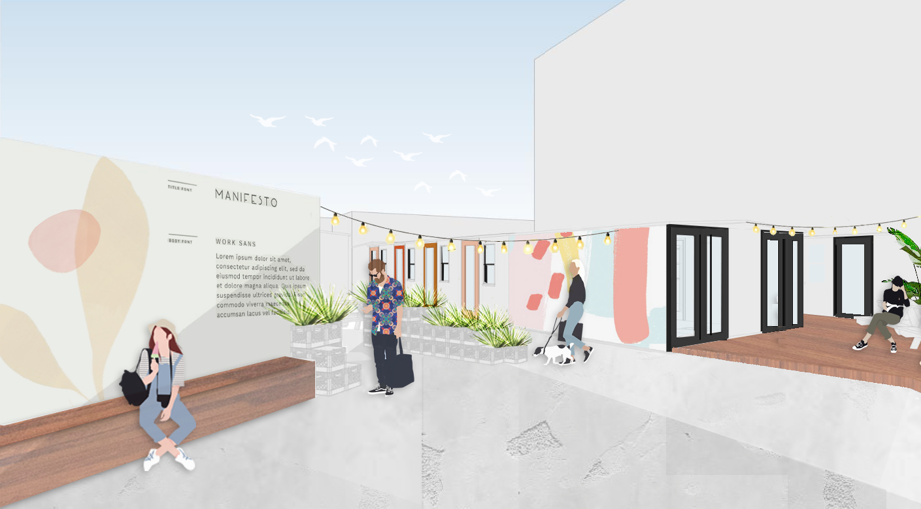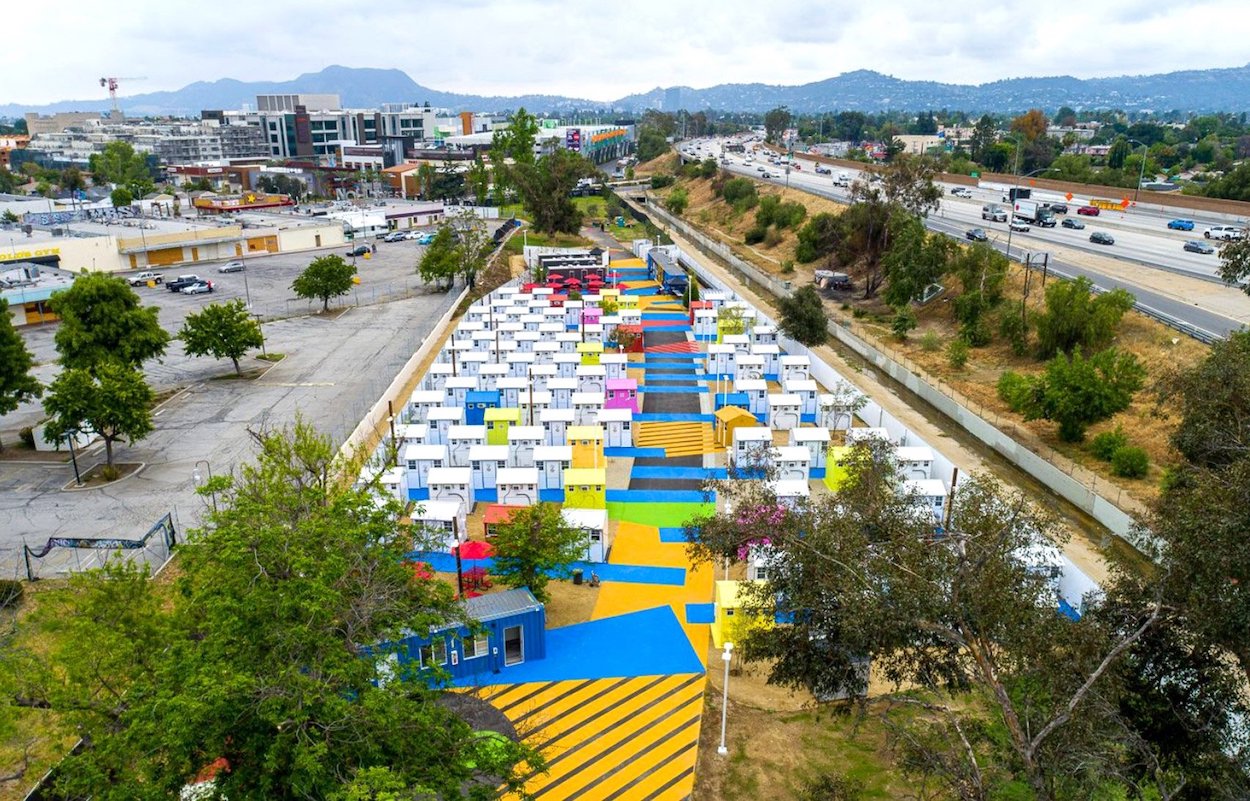At a tightly packed 47 square miles, median home costs of $1.47 million, and an unsheltered population exceeding 8,000, San Francisco has one of the country’s most visible homelessness problems. The San Francisco Chronicle’s editorial board, which has been documenting the crisis for six years through its Homeless Project series, has described the situation as a “humanitarian crisis” and the city as a Boschian hellscape, “merely an archipelago of safe islands floating in an ocean of human feces and hypodermic needles.” While the pandemic exacerbated things, the city is starting to experiment with design solutions to provide low-cost transitional housing for the unsheltered.
One such model comes from Dignity Moves, a housing complex located on a city-sanctioned tent encampment that will provide 70 tiny homes designed by Gensler and PAE Engineers when it opens in the spring. The rooms are situated in prefabricated duplexes equipped with insulation, electrical outlets, a bed, and desk with a chair. The complex has two communal dining areas where three daily meals provided by the nonprofit Mother Brown are served. Each unit will cost the city $30,000 to maintain—an appealing figure considering the city spends double that amount per tent at homeless sites.
“While more permanent housing is critical for alleviating the housing crisis, building sufficient permanent housing is expensive and will take years, while our unhoused neighbors need help now,” Elizabeth Funk, founder and executive chairman of DignityMoves, said in a statement. “Our streets cannot be the waiting room. The longer people are on the streets, trauma takes a serious toll, making future successful outcomes much more challenging.”

